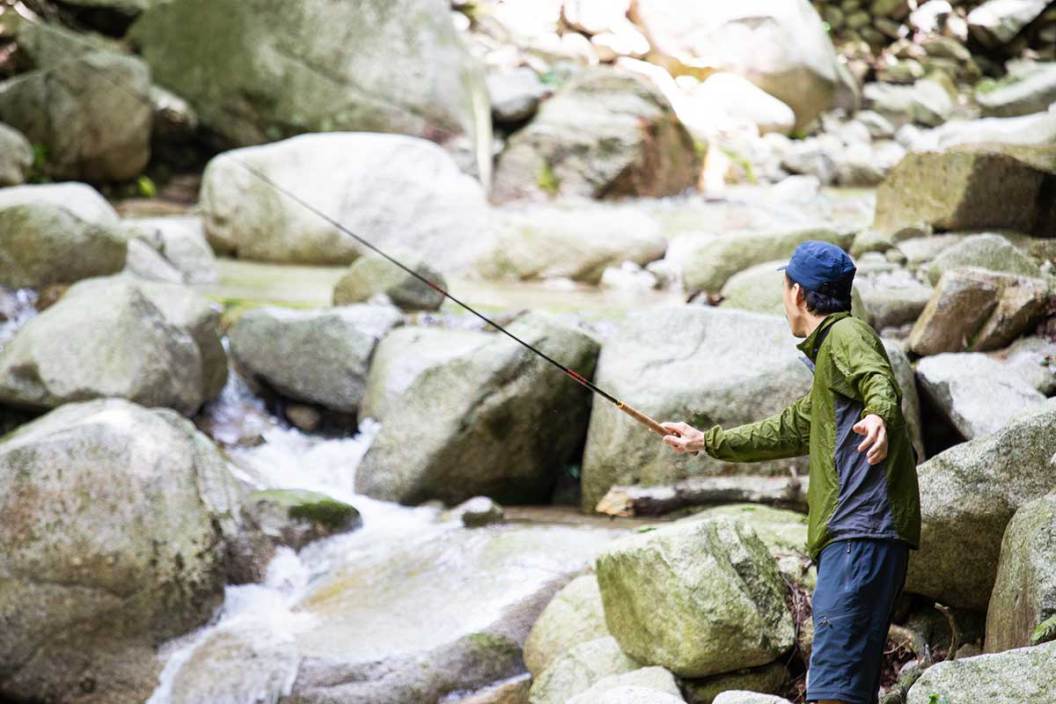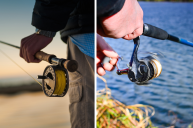This lesser known spin on fly fishing is minimalistic yet effective and fun. Here's what you should know about tenkara.
Originating in Japan more than 400 years ago, tenkara fishing was traditionally practiced by commercial fishermen for catching freshwater trout in mountain streams.
The simplicity of the sport incorporates a basic reel-free rod for a streamlined, low maintenance setup. While western fly fishing is typically centered around the latest high tech gear, tenkara is focused on the fishing itself.
Tenkara fishing wasn't popularized outside Japan until a company called Tenkara USA hit the scene in 2009. It certainly hasn't risen to the popularity level of regular fly fishing, but tenkara fishing is slowly gaining traction in the States.
If you're interested in trying out this angling adaptation, here's what you'll need to know.
Tenkara Equipment
Early tenkara rods were constructed of bamboo, but many modern day rods are made with carbon fiber or fiberglass. They usually measure between 11 and 14 feet and are more flexible than traditional fly rods. A wood or cork handle finishes the rod. The unique design of tenkara rods makes them easier to control across currents. The latest tenkara rods come in a variety of configurations for different use cases, but most will get the job done across the board.
Tenkara line is typically tapered and super lightweight for easy casting, although some anglers opt for a level line, which is tougher to cast but more versatile. Tenkara lines are fixed in length and designed to sink slowly but can also be kept off the water.
Similar to the traditional fly fishing setup, a tippet between three and five feet long is attached to the line to connect the fly. But tenkara fishing does not employ a leader.
Anglers have lots of choices when choosing a fly, but most tenkara pros opt for moderately sized wet flies.
Even beyond the lack of a reel, tenkara tackle setup varies slightly from western fly fishing. Experts recommend alternative knot styles, and these can vary based on your line and other factors.
Tenkara Technique
Tenkara casting can take some practice to master, but it's generally pretty easy to get started with sufficient skills for hitting the water. The ultralight line means increased accuracy and control, but it can also make finding the sweet spot for casting power challenging to find.
According to Paul Gaskell of Discover Tenkara, "That sensation of pinpoint casting by unrolling a neat casting loop is one of the main pleasures to tenkara fishing for many anglers. In tight quarters, roll casts, slingshot casts, side casts and all the usual fly fishing tricks to get your fly out are all used in tenkara."
While some assume it's about dapping, a good tenkara cast will actually feature a shorter casting stroke, only the fly landing on the water, and no pause between back cast and forward cast. Seeing the cast in action might be the best way to learn, so check out this demo.
Some other tips Paul Gaskell offers up for tenkara anglers include:
- Position your body so you're not in the fish's direct line of sight or at an angle where it will skyline you.
- Take note of the direction of the sun and avoid creating a shadow where you want cast.
- Switch up your angles.
- Keep noise and water disturbance to a minimum, especially in shallow water.
Tenkara USA has a great resource for learning all the basics available for free on their website. It outlines how to set up a rod, read water, locate fish, choose flies, tie knots, cast, and more for beginners.
A Case for Tenkara
Tenkara fishing has garnered a growing loyal following due to its relative simplicity. Just as recurves and longbows embrace the basic traditionalism of archery compared to compounds, tenkara rigs are more bare bones than their western fly fishing counterparts.
"I can see a day when I hike into my favorite small stream with just my tenkara rod and a few flies," said legendary angler Ed Engle. "It's a fishing style designed to have as little between the angler, nature and the trout as possible. And, that's what I'm after..."
For anglers who truly wish to focus on form and fish — rather than pricey reels and tough-to-master accessories — tenkara is a great entry point, especially for new anglers or outdoorsmen searching for a new hobby. It's perfect for trout fans, although some tenkara anglers catch other species as well.
With fewer moving parts to break or bang up, tenkara setups are also easier to transport into the remote areas where anglers usually put them to work. They still require some minor care and upkeep, but you don't have the same level of maintenance with tenkara as you do other styles of fishing equipment.




